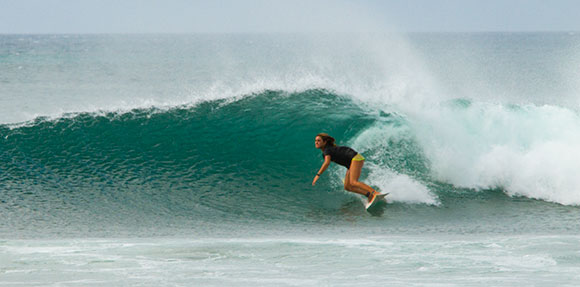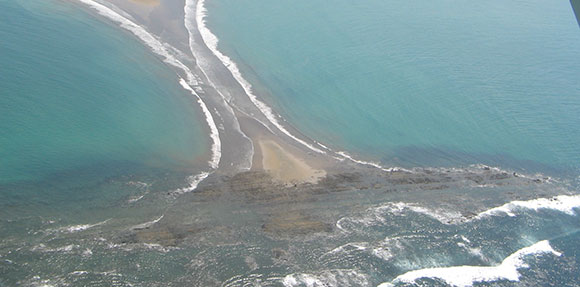What makes Costa Rican quality of life unique?
LITTLE AMAZONAS
 There is a place in Costa Rica where the exuberance of natural wildlife and visitors become one and where the water is a giant mirror reflecting the lush foliage all around. Surrounded by a system of natural canals and lagoons running from southeast to northeast, Tortuguero National Park, located in the Northern Caribbean side, is without any doubt our little Amazonas. It is also one of the most important places in the world for the protection of the green turtle and home of other species such as the manatee, the American crocodile and the Gaspar fish, which is considered a living fossil.
There is a place in Costa Rica where the exuberance of natural wildlife and visitors become one and where the water is a giant mirror reflecting the lush foliage all around. Surrounded by a system of natural canals and lagoons running from southeast to northeast, Tortuguero National Park, located in the Northern Caribbean side, is without any doubt our little Amazonas. It is also one of the most important places in the world for the protection of the green turtle and home of other species such as the manatee, the American crocodile and the Gaspar fish, which is considered a living fossil.
Majestic birds such as the Great Blue Heron, the biggest heron in the country, and the Northern Jacana, famous in the animal world because the female protects the territory while the male nests the eggs, populate and thrive in this rich environment. The birds are so diverse that they account for approximately half of the species found in Costa Rica and surpass the number of species found in all Europe. Herbal swamps, marshlands and ‘flooded’ forests are part of this array of diverse habitats.
But Tortuguero is not only about nature. Being on the Caribbean side, it is one of the larger regions of Afro-Caribbean culture in the country. The majority of its population has Jamaican origins and keeps their food, dances and traditions. Their dishes are mostly spicy and many include coconut, giving Tortuguero a well-founded reputation to experience nature and culture.
COSTA RICA’S MARVELS OF FIRE
 As part of the Pacific Ring of Fire, Costa Rica´s volcanoes are among the most mesmerizing in the world. In fact, the present-day landmass known as Costa Rica is the result of complex volcanic activity that took place some 75 million years ago and still continues today.
As part of the Pacific Ring of Fire, Costa Rica´s volcanoes are among the most mesmerizing in the world. In fact, the present-day landmass known as Costa Rica is the result of complex volcanic activity that took place some 75 million years ago and still continues today.
Counting every location or crater where an eruption has occurred within its borders, Costa Rica volcanoes boast a stunning 112 sites throughout the country. Most Costa Rica volcanoes and their surrounding areas have been made into national parks.
One of the most popular is the Arenal Volcano, which last erupted in 1968. Until then, it was assumed that the volcano was just another peak of the mountain range. The mountain and surrounding area were declared a national park in 1994. Thermal hot springs are now the area’s main attraction, most of which boast nearby trails and numerous lookout points.
Currently, Arenal Volcano only releases gases in crater C and has fumarole activity in crater D. Seismic monitoring of the volcano indicates that volcanic activity remains low and external manifestations have been reduced to a minimum. In 2010, after 42 years of uninterrupted volcanic activity, the volcano entered a resting phase, ceasing explosive eruptions, pyroclastic flow and lava spilling. However, according to scientists, Arenal Volcano remains active.
AN INDIGENOUS LEGACY THAT IS STILL A MYSTERY
 Although the indigenous populations inhabiting Costa Rica before the Spanish arrival did not build architectural structures rivaling the Mayan pyramids of northern Central America, they did leave behind elaborately carved stone spheres whose meaning remains a mystery to this day.
Although the indigenous populations inhabiting Costa Rica before the Spanish arrival did not build architectural structures rivaling the Mayan pyramids of northern Central America, they did leave behind elaborately carved stone spheres whose meaning remains a mystery to this day.
There are 235 registered stone spheres in Costa Rica, all of them equal in perfection, measuring up to two meters and as small as 20 centimeters. They were created over a 1,000-year time period that began around the year 400 A.D. and lasted until the colonization of Costa Rica by the Spanish. The majority were found in the South Pacific and constituted such an important element to these societies that their production survived nearly a millennium.
The spheres were associated with pre-Columbian populations and regions where plazas, passing zones and open terrain were present. They constituted an art form that was meant to be seen, perhaps to differentiate the towns in which they were made from their neighbors. The spheres were often aligned with each other, forming lines, triangles or rectangles with an unknown meaning.
These indigenous groups also became recognized for their metal and ceramic work, and Costa Rica’s South Pacific was, in fact, the principal locale for pre-Columbian objects.
A PARADISE FOR DIVERS
 With a marine surface that is ten times bigger than the terrestrial and an immense biodiversity, Costa Rica is the perfect place for diving fanatics. The majority of these places belong to wildlife protected areas around the country, such as the famous Cocos Island National Park, which is also a World Heritage site. Costa Rica´s Pacific coast is considered by Rodale´s Scuba Magazine as one of the top five destinations in the world for advanced scuba diving.
With a marine surface that is ten times bigger than the terrestrial and an immense biodiversity, Costa Rica is the perfect place for diving fanatics. The majority of these places belong to wildlife protected areas around the country, such as the famous Cocos Island National Park, which is also a World Heritage site. Costa Rica´s Pacific coast is considered by Rodale´s Scuba Magazine as one of the top five destinations in the world for advanced scuba diving.
Located 532 kilometers off the Pacific coast, Cocos Island was historically a refuge for pirates, merchants, whalers and even colonizers. Today, its natural treasures include hammerhead sharks, humpback whales, bottle nose dolphins, hawksbill turtles and a variety of coral species. The famous oceanographer Jacques Cousteau deemed Cocos Island “the most beautiful island in the world.”
But the Caribbean coast has its own wonders too. For example, the Gandoca-Manzanillo Wildlife Refuge is unique because of the amazing species found there. In only five square kilometers of coral reef, scientists have discovered 600 species of mollusks, 10 percent of which are unique in the world. In general, the Costa Rican oceans shelter at least 6,777 species, representing 3.5 percent of known species in the planet and also making the country a must-visit destination for diving enthusiasts.
AN OLD SURVIVAL RITUAL
 Marine turtles have inhabited the Earth for over 100 million years, surviving extreme climatic changes. Costa Rica is home to some of the most important turtle nesting beaches in the world, where it is still possible to witness this old survival ritual.
Marine turtles have inhabited the Earth for over 100 million years, surviving extreme climatic changes. Costa Rica is home to some of the most important turtle nesting beaches in the world, where it is still possible to witness this old survival ritual.
On the Pacific as well as the Atlantic coast, hundreds of female sea turtles representing five different species of the world´s seven species of these reptiles, arrive on Costa Rican beaches to carry out their tireless mission to guarantee their survival. For example, Ostional Beach, on the Northern Pacific coast, is considered the main nesting site for the olive ridley turtle, which is famous for its large mass arrivals.
The giant leatherback turtle cannot go unnoticed, even though it is in great danger of extinction due to man-made causes. It is not only the largest sea turtle on the planet, measuring up to 1.8 m and weighing up to 400 kg, but also the furthest traveling reptile. Their journey takes them from their feeding sites back to the beach where they hatched in order to lay their eggs. In some cases, these giant turtles travel between continents. Other sea turtles that can be seen in the country are the green, hawksbill and loggerhead.
GUAYABO: A GLANCE OF COSTA RICA’S INDIGENOUS PAST
 In 2009, the most important archeological site in Costa Rica, the Guayabo National Monument, located in the outskirts of Turrialba Volcano, was declared a World Engineering Heritage Site by the American Association of Civil Engineers (ASCE). Guayabo is the third archaeological site in Latin America to receive this distinction after Machu Picchu and Tipon in Peru.
In 2009, the most important archeological site in Costa Rica, the Guayabo National Monument, located in the outskirts of Turrialba Volcano, was declared a World Engineering Heritage Site by the American Association of Civil Engineers (ASCE). Guayabo is the third archaeological site in Latin America to receive this distinction after Machu Picchu and Tipon in Peru.
One of the reasons is its over 700-year old aqueduct, still functional today, as is its “calzada”, a stone walkway used as a transit route and part of the drainage system. The calzada leads towards a ceremonial center, where it is possible to observe several mounds which at one time served as supports for the famous conical roofed straw and reed structures of South American influence. Stone was commonly used in Guayabo to build a system of sidewalks and walls that helped prevent erosion and landslides. There are also stone tombs decorated with pebbles, flagstones and engravings or petroglyphs.
Guayabo was constructed between 300 B.C. and 1400 A.D. and was populated by indigenous groups of the Intermediate Cultural Area, which extended from Alajuela, in Costa Rica, all the way to Colombia, Venezuela and part of Ecuador. Despite the fact that Guayabo was no longer populated when the Spaniards arrived and the causes of its depopulation are still a mystery, the site was for centuries undoubtedly a highly developed cultural and political-religious center, whose importance was heightened precisely because of its rich resources and the presence of the Turrialba Volcano.
THE CANOPY TOUR, ORIGINALLY FROM COSTA RICA
 Born in Costa Rica in the 90s, the canopy tour is the closest anyone will come to feeling like a monkey travelling through the tree tops. It is also one of the best ways to explore the richness of the canopy, where the biggest amount of the forest´s biodiversity is found and to raise awareness about the rainforest\’s fragile ecosystem.
Born in Costa Rica in the 90s, the canopy tour is the closest anyone will come to feeling like a monkey travelling through the tree tops. It is also one of the best ways to explore the richness of the canopy, where the biggest amount of the forest´s biodiversity is found and to raise awareness about the rainforest\’s fragile ecosystem.
It consists of a series of suspended cables attached from tree to tree on which one glides along using a pulley that is secured to alpinism equipment (the harness). Cables vary in length (they can measure even 700 meters long!) and end in small wooden platforms built in the tops of trees, which are located up to 100 feet above the jungle floor. The impact to the forest is minimal. This explains why biologists were the first ones who, more than three decades ago, started using this technology for research.
The canopy tour has been adapted to a great variety of environments and landscapes within the country, including mountains, canyons, rivers, waterfalls and cloud, dry and tropical forests. The tour has also been exported to other Latin.
COSTA RICA A FAVORITE COUNTRY FOR SURFING
 It seems like every surfer who visits the country agrees that Costa Rica is one of the best places in the world to surf; it’s no accident Costa Rica is the third most popular destination for this sport after Hawaii and Indonesia. The reasons are simple: beaches with excellent year-round waves, pleasant weather, warm water, friendly people and reasonable prices.
It seems like every surfer who visits the country agrees that Costa Rica is one of the best places in the world to surf; it’s no accident Costa Rica is the third most popular destination for this sport after Hawaii and Indonesia. The reasons are simple: beaches with excellent year-round waves, pleasant weather, warm water, friendly people and reasonable prices.
In 2009, Billabong World Surfing Games took place in Costa Rica, with 35 countries participating. To host the games, Costa Rica beat out renowned surf destinations like Brazil and South Africa. Consider: Costa Rica has two great oceans within a 6-hour drive of each other. This makes it possible to surf the Pacific in the morning and the Atlantic in the afternoon.
A PERFECT WHALE’S TAIL

These warm waters are just what these whales are looking for when the winter time arrives. Northern humpbacks are normally seen from December to April and southern humpbacks from July to October.
The spectacle is amazing, taking into account that they can measure up to 16 meters in length and weigh up to 40 tons. The name is due to a small hump in front of their dorsal fin that can be very noticeable when they double over to dive into the water.
A VOLCANO ALMOST IN A CAPITAL

Irazu volcano has been a national park since 1955. Its name comes from the indigenous word “Istaru,” meaning “mountain of tremors and fire.” Despite of being the volcano with highest altitude in the country, its summit can be reached easily by car, making this five crater volcano very accessible to all visitors.
Situated in the main crater of the volcano, there is a stunning, sulfurous, turquoise-green lagoon measuring more than a kilometer in diameter and some 300 meters in depth. It has an average temperature of 35 degrees Celsius and reaches 70 degrees in areas closest to its fumaroles. The summit is crowned by an interesting Andean-like vegetation consisting of small shrubbery and its ample, semi-desert like landscape that in some way resembles the moon’s surface.
The journey to Irazu also includes a peaceful trip across fertile agriculture lands and beautiful landscapes of the region´s unique small-sized vegetation. The first recorded eruption of this volcano occurred in 1732 and its last active period ended in 1963. It seems to be asleep now, but who knows for how long…



